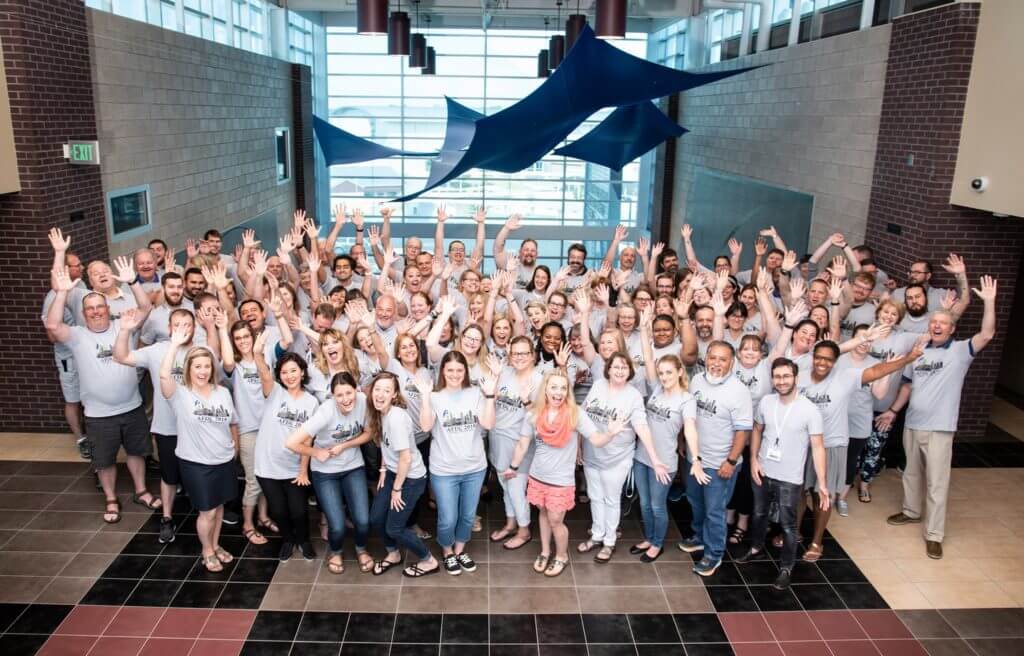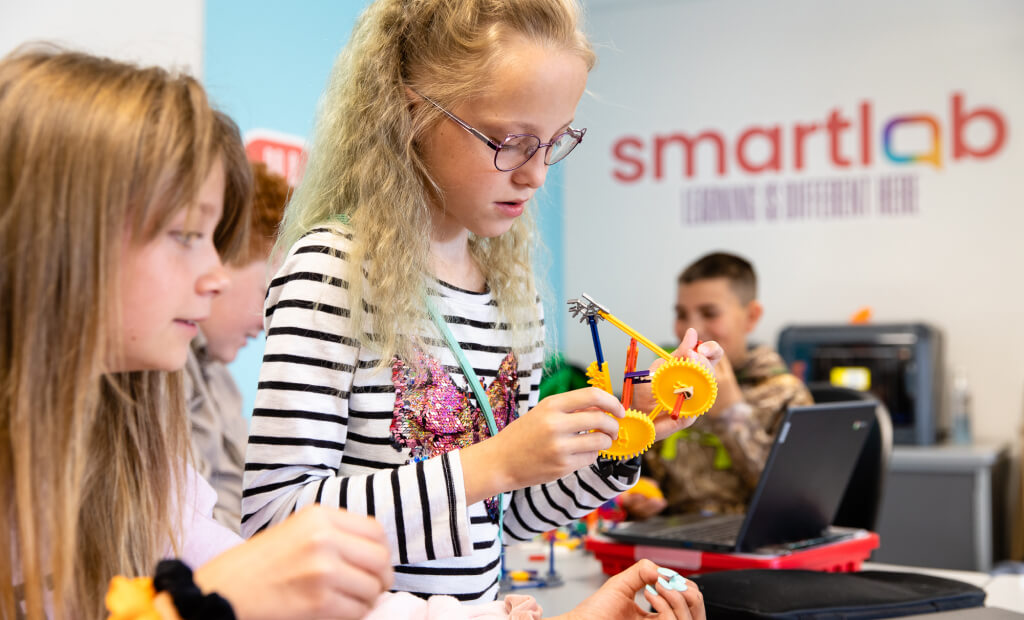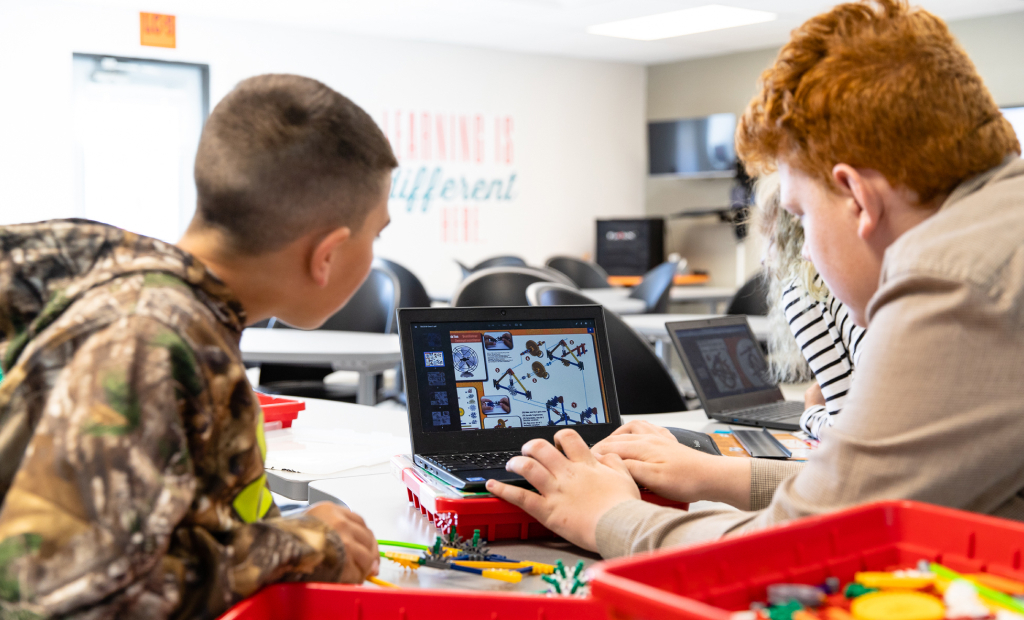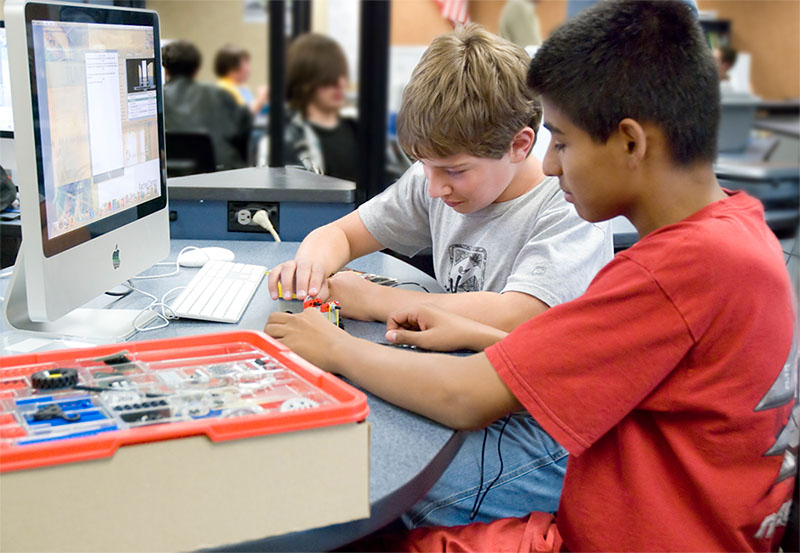Three Ways to Get Them College and Career-Ready
As disruptive as COVID-19 is, I am also struck by the extraordinary things happening across the country. First, I learned that the auto industry in my region was retooling to build ventilators, and then I saw the video of Tesla’s engineers working to develop ventilators from car parts.
As I watched the engineers working in their lab, it reminded me of students working on our pneumatics curriculum in a SmartLab. I couldn’t help but see the parallel between the two and I realized that students in SmartLabs are being prepared to be the next generation of innovators.
To ensure students in a SmartLab are college- and career-ready, we encourage educators to leverage these three strategies.
Give kids real tools.
Just as Tesla’s engineers were using the principles of pneumatics to develop ventilators, the students from Lowell Middle School were using a pneumatics system to explore circuitry concepts and the use of compressed air to power machines.
Having the right tool for the job is a nod to Maria Montessori’s philosophy of providing students with real tools. After all, only when you have a real tool can you produce real results. Yes, we scaffold the tools to complement the complexity of a student’s ability, but in a SmartLab, students have access to real, age-appropriate tools.
Ask students to use the tools to solve problems.
By the time students reach high school, they’re using professional-grade tools. The team of seniors at Weld Central High School wanted to leave a legacy for the SmartLab, so they started a videography business. To help it succeed, these young entrepreneurs secured funds to purchase a high-end drone, then problem-solved to get their FAA certificates to become drone pilots.
Connect problems to the real world.
With an engineer from the auto industry as their SmartLab Facilitator, the students at Wadsworth Elementary School have the unique opportunity to be mentored by someone who has actually done the work. Mr. Lewis helps students replicate the scope of real-world projects by providing constraints, like a budget or timeline, then lets the students work within the constraints to come up with solutions. This real-world style of teaching leads to students to come up with creative and innovative solutions.
In a SmartLab, students identify a problem they want to solve, are presented with tools, and then are unleashed to discover a solution—or maybe no solution at all—and through this process they learn to persevere.
This, after all, is great training for life—perseverance is essential for success in college and careers. Even the Tesla engineer demonstrated that when he said, “there’s still a lot of work to do but we’re giving it our best effort to make sure we can help some people out there.”
Finally, thank you to all of the teachers who continue to inspire and empower students to think differently—even in the middle of transitioning to virtual learning! Thank you to the thousands of teachers and administrators, like the ones above, who are preparing extraordinary students for our future.




